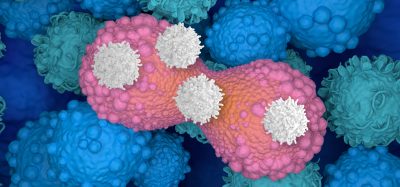Novel DNA vaccine offers broad protection against Influenza-A H3N
Posted: 19 October 2018 | Dr Zara Kassam (Drug Target Review) | No comments yet
Researchers developed a novel DNA influenza vaccine based on four micro-consensus antigenic regions selected to represent the diversity of seasonal H3N2 viruses…


Researchers developed a novel DNA influenza vaccine based on four micro-consensus antigenic regions selected to represent the diversity of seasonal H3N2 viruses across decades. The DNA vaccine protected mice against a lethal challenge with more than one influenza-A H3N2 virus and protected them from severe H3N2-related illness despite the lack of an exact sequence match between the vaccine immunogen and H3 immunogen.
David Weiner, The Wistar Institute of Anatomy & Biology, Philadelphia, PA, and coauthors from Wistar and Inovio Pharmaceuticals, Plymouth Meeting, PA conducted the study entitled “A Synthetic Micro-Consensus DNA Vaccine Generates Comprehensive Influenza-A H3N2 Immunity and Protects Mice Against Lethal Challenge by Multiple H3N2 Viruses.” This new DNA vaccine strategy was intended to elicit a comprehensive immune response and to represent a step forward in eliminating the need to reformulate a seasonal vaccine each year to protect against influenza-A H3N2.
The researchers designed a vaccine designed to elicit broad immune responses against diverse influenza-A H3N2 viruses by engineering four synthetic hemagglutinin H3 immunogens. The H3 sequences used were chosen by aligning sequences from 233 influenza-A H3N2 strains representing viruses from across multiple decades. The researchers identified four micro-consensus sequences with sufficient sequence similarity to predict cross-reactive immune responses against diverse H3N2 strains.
“Influenza continues to be a major cause of morbidity and mortality worldwide, as the virus continuously changes to evade the human immune system,” says Editor-in-Chief Terence R. Flotte, MD, Celia and Isaac Haidak Professor of Medical Education and Dean, Provost, and Executive Deputy Chancellor, University of Massachusetts Medical School, Worcester, MA. “The approach developed by the Wistar Institute team holds great promise as a means to elicit an immune response that the virus will not evade.”
The findings are reported in Human Gene Therapy.
Related topics
Disease Research, DNA, Vaccine
Related conditions
Influenza
Related organisations
The Wistar Institute of Anatomy & Biology
Related people
David Weiner, Terence R. Flotte







